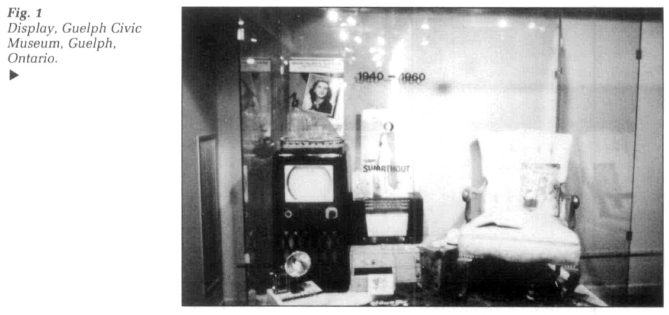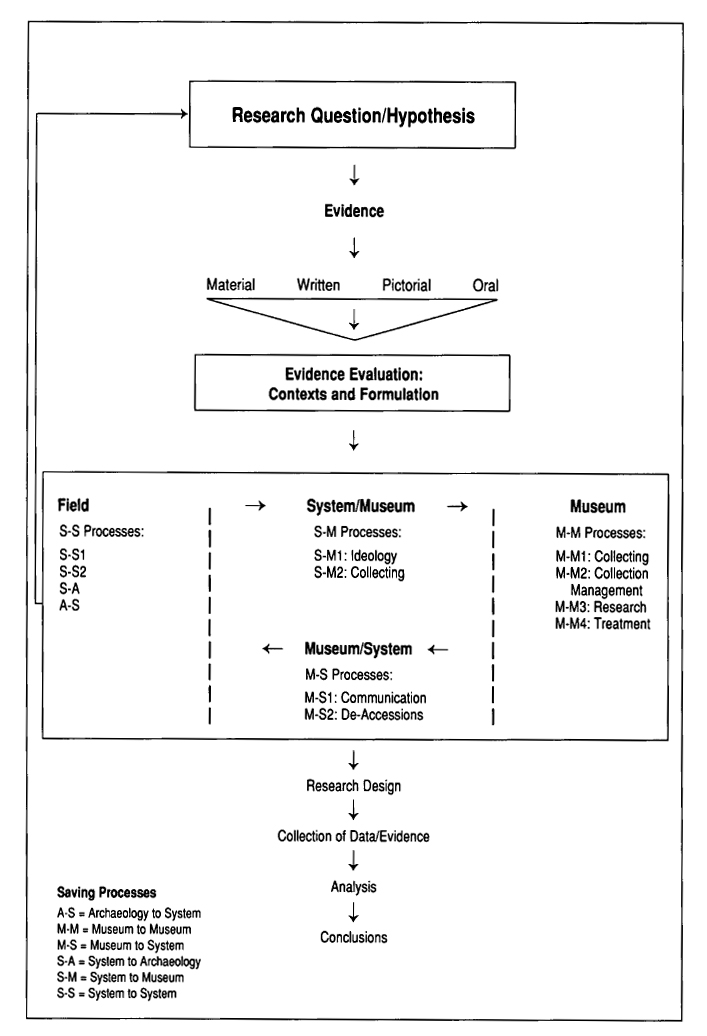Articles
Silk Purses from Sows' Ears:
The Study of Material Evidence in Museums
Museums are a worthy, if untapped, source of material evidence suitable for academic study. Like any other evidential source, museum material collections require conscious study of the methodological problems of their use. In this article, the author discusses the place of museum evidence in the spectrum of types of evidence. Then, an attempt is made to suggest a model for the study of the museum collections, their history, their formation and museum life alterations, in order to test the collections' suitability to research questions or to assist in the reformulation of research questions suitable to museum evidence. In particular, methods of material science investigation are discussed for future interdisciplinary work for museums.
Résumé
Les musées sont une source précieuse, bien que non exploitée, d'objets-témoins convenant à une étude savante. Comme n'importe quelle autre source de cette nature, les collections matérielles des musées appellent un examen raisonné des problèmes méthodologiques que pose leur utilisation. Dans cet article, l'auteur examine la place qu'occupent les pièces de musées dans la gamme générale des objets-témoins. Il propose ensuite un modèle pour l'étude des collections de musées, de leur histoire, de leur formation et des changements qu'elles ont subis, afin de déterminer dans quelle mesure elles peuvent être utilisées pour chercher réponse à certaines questions ou faciliter la reformulation des questions que le chercheur doit se poser face aux pièces de musées. L'auteur analyse en particulier les méthodes d'étude de la culture matérielle qui pourraient être utilisées dans de futurs travaux interdisciplinaires pour les musées.
1 Museum collections are often the forgotten or excluded choice of evidence for both museum and non-museum based researchers, yet it should be a truism that the variety, state, and quality of available recorded evidence of all types must be measured against the research issue at hand. With a guide to the methodological problems of museum collections perhaps they can be liberated from their status as the poor stepchildren of research to their full potential as evidence. The challenge, then, is to prepare an approach to material culture research which can exploit the underutilized but ever-present museum collections which offer a unique assemblage of the recorded evidence of human experience.
2 The definition of "museum collection" is, to say the least, problematic. The museum media, be it named object, artifact or specimen, may consist of a range of material, some three-dimensional (from airplanes to tape recordings, statues to toys, textiles to trains, books and manuscripts), some two-dimensional (from photos, etchings, drawings, paintings, papers, maps, plans and notes). Further, the collections of some museums exist outside their walls; these include objects in situ or monuments in the field which are too large or inappropriate to be moved, such as a fort or a natural history site. The additional complication is that, despite the traditional orientation of most museums to collections of tangible objects, a significant number of museums and departments do not actually deal with physical objects as the focus of their collecting. For example, linguists, anthropologists and folklorists acquire utterances, or study human behaviours; natural historians, earth and physical scientists collect animal behaviours and scientific processes and so on; site museums may commemorate events, such as battles, for example, rather than objects.
3 Not accidentally, this expansive definition of museum media parallels the broadest definitions of material culture offered by several noteworthy authors. For Melville Herskovits, material culture is:
4 James Deetz expands this already broad definition beyond the artifactual world to include a range of events from "cuts of meat" and the human body to language, water, or air, any effect shaped by the hand of man.2 In a similar vein, museum thinkers have frequently discussed the question of whether museum collections represent objects or the ideas represented by them.3
5 Thus, museum collections can signify two meanings: one manifested in the physical holdings of the museum (museum-centred); and another, signified by the museum area of research or issues suggested, but not totally contained, by the collections (museum-referenced). Accordingly, the concepts of "kinetifact"—to represent the essence of objects whose original state was in motion, i.e. railway trains—and "mentifact"—to represent the idea of the artifact—have been added to our language. Further, collections can reveal as much by what was not included as by what was. Debates about the appropriate subject of the museum collections based on the restricted versus the expanded definition of the museum collections represent a fundamental philosophical divide in museology, as in material culture.
6 Notwithstanding such expansive definitions of material culture, there can be only four types of recorded evidence in which human behaviour and culture, however defined, is manifested over time: pictorial, material (including physical-artifactual), oral and written. The written, oral and pictorial sources have had their methodological assessments in their disciplines and, to some extent, in museology.4 Only in recent years has material evidence generated concern for methods of research, at least in the fields of material culture, museum studies and the discipline of history.5 Material evidence, then, is the phenomenon of material culture manifested in physical proofs, commonly called objects. Fields such as archaeology, ethnology and anthropology, ethnohistory and material and forensic science and other disciplines utilize material evidence. Their theories and methodologies can offer disciplines such as history, the history of art and other fields, which traditionally rely primarily on the use of documentary evidence assistance in approaching material culture. In particular, fields may exchange help in the study of formation and treatment of collections in our custodial institutions in order to exploit the record of material evidence for the study of material culture.
7 As Thomas Schlereth has noted, history has been particularly slow to accept the use of material evidence.6 Central to the problems in the use of material evidence is a distrust of the validity of the evidence of the artifact as was best expressed in historian James Hesseltine's critical essay of 1957 when he wrote:
But Hesseltine was engaged in the overstatement of a conference presentation. He actually gave a clue to the problem of using artifactual evidence which may give a clue to its remedy:
Many Museum workers themselves have analyzed the problems in the state of research in museums, particularly from social and material history viewpoints.9 Using the museum as a main custodian of material culture, we can examine the methods for internal criticism of artifacts and so counter Hesseltine's denial of artifactual evidence, and remedy museum workers' claims to improve collections research.
A Research Model for Museum Collections
8 To unlock the museum and its collections as a source for research, several steps are necessary. First, we can explore a research model for collected material evidence that goes beyond the existing artifact research models.10 Second, to fill out the museum equation of the collected evidence, it will be useful to see the museum as part of larger social processes that both form and save the evidence of the past. This study must depend on interdisciplinary methods to examine the relationships between the cultural past and the remnants we observe today. Fortunately, in Michael Schiffer's 1977 article, Schiffer provided a model for understanding the saving processes of society.11 In the third step, the museum will be the laboratory to examine and extend Schiffer's postulates and illuminate the general social saving and collecting habits of material evidence. The effect of museums on the quantity, quality, and research viability of material evidence through their collecting, documenting, conserving, exhibiting and interpreting functions are key to this analysis.
9 Studies of museum collections cross-culturally have revealed certain processes common to museums. For this paper, a selection of museum collections in Toronto have been studied: Fort York and the general collections of the Toronto Historical Board, the Gardiner Museum of Ceramic Art (now part of the Royal Ontario Museum), and the Canadian Decorative Arts Department of the Royal Ontario Museum. Several institutions were chosen to illustrate the model but also to test the cross-institutional potential to test the model's suitability for examining one community's material culture record.
10 One approach allows the researcher the flexibility to choose the type(s) of recorded evidence most suitable to the research question and to measure the effect of the transformation process in the creation of that evidence. As such this approach departs from models by E. McLung Fleming or G. Finley. The material culture research question that begins the study directs the choices of method while the availability and dependability of the evidence will determine the possibility of the study.
11 First, this design includes museum collections, whether written, pictorial, material/artifactual or oral in form, which can be added to the data base, provided methodological limitations are noted and dealt with. Second, it allows for several possible paths through the research model dependant on three factors: the question being asked, the nature of the evidence available and finally the method of study selected. Some research may be centred on material held in a specific museum, or several museums. Other work may be centred on pictorial or written sources held in alternative custodial institutions. Sometimes field work will be conducted on material not yet within the custodial institution's purview. Most often, the research method will use several types of evidence held in many different locations and states. The choice of evidence selected will depend on the assessment of the quality, the various types and the suitability of the data to the research question. Material evidence can and should be used if it can answer the question(s) and the accompanying data base is exploitable. The model does not ask you to choose between an artifact-centred or formalist method (Fleming) or an hypothesis-based or analytical method (Finley), both based purely on preference. The selection of method will be determined by the type of question, the quality and order of the evidence and the methodologies possible and finally, by personal intellectual choices.
12 The middle section of the model becomes essential in this approach and will be the focus of this discussion. The state of evidence, whether in the field or in the museum (or other custodial institutions such as archives or libraries), must affect the reformulation of the hypotheses; the research model is not linear but evokes repeated passes through it for the reformulation of questions and hypotheses. Thus, this paper will concentrate on three stages in the assessment of material evidence, particularly as represented in the museum, which are critical to the dynamic of material evidence research.
13 The model represents a process of analysis dependent on variables such as the research questions being formulated, the history and state of the material and its accompanying data, and not least, the organizational culture in which the model operates. But first, there are problems of definition.
Stage One Pre-Museum Processes of the Saving of Material Evidence: S-S, S-A, and A-S Processes
14 Schiffer showed material evidence to be mutable, subject to general processes which he names cultural transformation processes. He identified four basic kinds of transformations that can be extended to assist us to understand the effect of "museumization" on artifactual evidence.12 With Schiffer's assistance, the multiple layers of societal actions upon the object—the last being that of museumization, the point at which it enters and is acted upon by the museum—can be unravelled to reveal the messages of the material evidence.
15 Schiffer's first process begins when our material proofs find their way into the ground, having been lost, discarded, broken or abandoned, thus entering the archaeological record.13 Accordingly, archaeologists have developed extensive methodologies to arrive at the meanings of the materials through the analysis of the quality and quantity of materials as dug from the ground. Alternatively, the artifactual evidence may have been transmitted above ground through time by a variety of methods. Now the object survives by a kind of Russian roulette as it proceeds through its life or death ritual. Schiffer identifies these survival steps as a "system to system" (s-s) process. Some of the material can make its way into the ground as a cultural deposit. Schiffer names this the "system to archaeology" (s-a) process but recognizes that there is a need for extended study on these discard and refuse processes much like the Tucson Garbage Project.14 Even in the ground, change goes on generated by agents of deterioration or by human or animal actors who level or alter the ground, or recover the item. At this last point, the material has re-entered the cultural system through the "archaeology to system" (a-s) process.15
16 Above ground, objects may follow a variety of paths of survival, changing their role in the behavioural system when the user or the use alters. Recycling—when a material from one item is used to produce a new one—is exemplified in the form of a sherd which is ground up for use in the production of new pottery or when precious metals or stones are introduced into a new piece of jewellery or work of art.16
17 Objects move into a secondary-use pattern when the object changes its role. There are multiple examples of the alteration of function of object; for example, hub caps become decoration for garages and recreation rooms, motorcycle jackets become fashion gear. Lateral transformation occurs when one object is transferred without modification to another user by auction, real estate agent, garage and rummage sales, gift or theft.17
18 There is a final survival step, that of conservancy action when an item is deposited into private hands or into public organization such as shrines, libraries, archives or museums. Schiffer only briefly addresses this stage:
19 A variety of factors affect the survivability of material objects in private and institutional hands and has been well identified by museum workers.19 The most basic characteristic, the durability of material, affects the chance of survival; hence metal, glass or fired-clay objects have more chance of lasting than do objects of natural materials, which have a faster rate of disintegration. Second, the use of an object affects its rate of deterioration; for example, rarely-worn dress clothes are more likely to survive than comfortable, everyday, work clothing. Size affects saving as well; large objects such as boats, trains, tractors, and trucks are less likely to be saved as they are difficult to handle and are seldom sheltered. The qualities of the unique or unusual, whether measured by decorative fineness, age or oddity, sometimes guarantee saving behaviours.
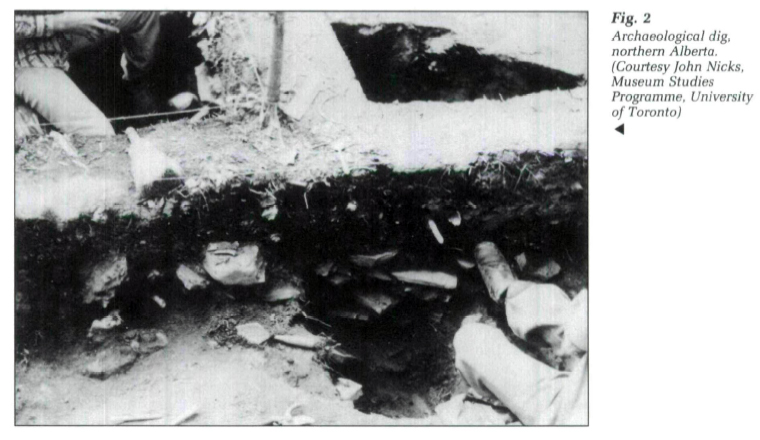 Display large image of Figure 2
Display large image of Figure 220 In addition, objects evaluated high in monetary terms are more likely to be saved. As well, affluent persons may have been more influential in saving objects in organized collections and in having them transferred into museums. Hence, museums contain larger samplings of the material of the elite, and minimal collections of the lower economic and social groups.
21 Existing material evidence in museums can be illuminated by Schiffer's various stages in several ways. Any museum collection will reveal that materials are affected by societal systems of saving and transformation of artifacts as represented in Schiffer's model. For example, the saving processes and alterations of meanings rooted in nostalgia and emotion can create authenticity and identification problems in many different types of collections. In the Toronto Historical Board site of Fort York, significant to the War of 1812 and the subsequent history of early Toronto, there is a table in the Officer's Sitting Room, known as the "Simcoe Table." The oral and recorded evidence accompanying this table dates from the 1890s and identifies it as having been used by Governor Simcoe, first Lieutenant-Governor of Upper Canada (Ontario).20 Yet, experts identify the object as being of the Victorian style and indicating a definite later production date. Similar creative associations occur with mythic heroes wherever museums exist. The Toronto Historical Board has three paisley shawls alleged to have belonged to Laura Secord, Canadian heroine of the War of 1812, although this is highly unlikely.
22 Both in the very act of their creation, as the artist, artisan or craftman's hand hammers out the human product, and in their very collection, cultural effect is operating. In the case of ethnology, many objects such as trade pottery or beads of native Americans are proofs of the influence of economic and cultural interactions with the collecting society; proofs of the acculturation process. So "the birchbark picture frame, souvenir plate made for tourist trade would have had little or no meaning in the pre-contact Indian culture."21 Yet often museums, formed mostly from nineteenth and twentieth century ethnological collections, contain mostly acculturated products. A high percentage of most ethnology collections are to some degree representative of native souvenir pieces.22 Objects such as the non-traditional European-inspired black velvet tea cosy (Athapaskan, from 1880, probably made by a student from a missionary-run reserve school) show the cultural effects of contact operating. Such analysis of the acculturated objects has become one of the dominant tasks of the working anthropology curators of the last thirty years.23
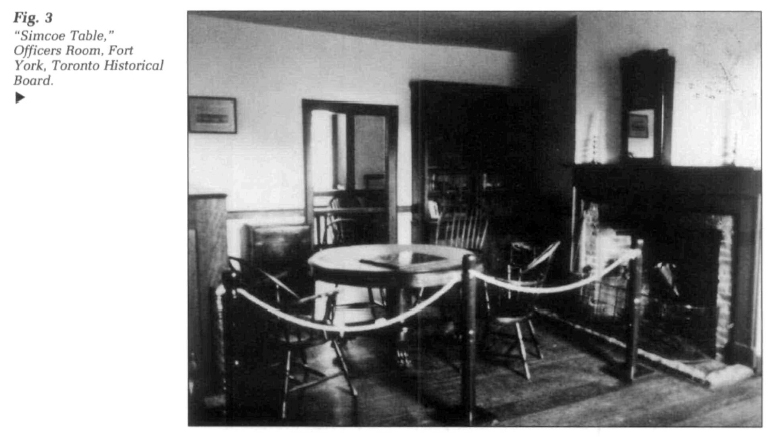 Display large image of Figure 3
Display large image of Figure 323 Up to this point we have illustrated Schiffer's analysis, which refers to the pre-museum state and limitations of material culture, with museum examples. Museums are full of material which has passed through these various saving stages; their earlier provenances may or may not have been recorded. But museums are particularly interesting in that they operate both as a saving place for items which have passed through stages of cultural transformation identified by Schiffer, as well as agents of transformation. With this point we have entered the next stage of the museum process.
Stage Two The Museum Process and Saved Material Evidence: S-M, M-M, and M-S Processes
24 With the proof of the museum's highly selected evidence we have been led to the role that museums play in the ongoing, although relatively unnoticed, transformation of material evidence. Three museum steps can be added to Schiffer's processes of cultural transformation—system to museum (s-m), museum to museum (m-m) and museum to system (m-s).
8(S-M)
25 The first process is that of the formation and treatment of museum collections within the intent of the organization, whether that of the original collector-founder, its governing authorities, patrons or staff.
Ideology-Bias
26 The study of the biases locked in the identity of an organization has become an area of study important to museums. Several types of museums have been the focus of ideological analysis. Many authors have identified the problems of museum collections particularly as they relate to other cultures.24 So Jonathan King of the British Museum has noted the bias of ethnology collections as a result of these saving patterns:
Art galleries, too, have had critical evaluation of their biases and ideological messages.26
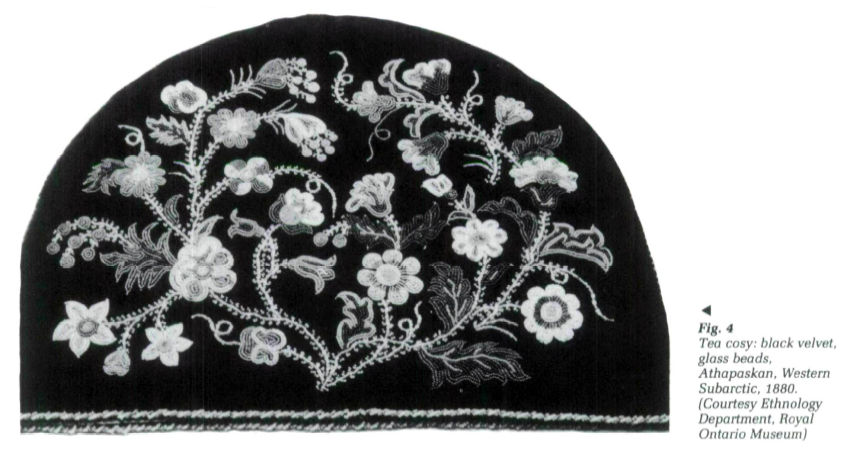 Display large image of Figure 4
Display large image of Figure 427 Living history sites, too, have had much critical reassessment offered on a number of themes such as: the tendency to overt patriotic overstatement; the tendency to nostalgia, to emotion over accuracy; the sanitization of the past, removing disease, hardship, and conflict; the failure to discuss all sectors of society, excluding women, minorities, or lower class citizens.27 As a sub-set of this historical review, the local community history museum has received its own analysis.28
28 All museums must, by definition, tell a selected story. The telling of these stories is the museum's purpose and represents its unique societal role. The generic community museum in Canada presents a promotional message either of its founders—the pioneer, the loyalists, the settlers (the terminology changes with the region and the group)—or of its most significant citizens of later decades, providing a nostalgic touchstone or, in the spirit of boosterism, a marker for the unique accomplishments of the area. The science or technology museum projects a message of growth, progress and invention. The decorative arts museum celebrates the quality of workmanship and artistic skill and the excellence of cultural goods. The ethnic museum reports the unique value of the cultural group, their struggles, successes and contributions.29
29 Many issues are typically neglected as a result of the history and fabric of the organization as Robert Turner and others have pointed to: the natural history context of human behaviour; pre-settlement material whether about the natural environment or human experience; non-European cultures other than as primitive, exotic, conquered or disappearing peoples; twentieth century events; children's lives, women's or minorities' histories; dirt, disease and hardship, international peace; urban processes; scientific failures.30
30 The complete ideological context of the museum is, however, complicated to unravel; the messages are often contradictory and changeable, translating often haphazardly into the functions of the institution which would be revealed in bias and ideology. The purpose may be at some point formalized in legislation or acts of incorporation. James Smithson's endowment, for example, was intended for "the increase and diffusion of knowledge" which became the operative mission of the Smithsonian. The Royal Ontario Museum's stated purpose is to hold "The Record of Nature Through the Ages" and "The Arts of Mankind Through All Time."31 In recent years, these phrases of intent have been replaced by more comprehensive institutional mandate statements and policies, following good museological practice, but often the remnants of the ideological operators remain in the collections, in the exhibits and even in the architecture.
31 For collections assessment, the resulting questions of bias centre on the representativeness, typicality, accuracy of the resulting assortment and the collection's utility for research, display and education. It is important to note, however, in the midst of analyzing museum collections bias, that the very existence of these special assortments of human life experiences—even the very patterns of selection and assortment—is historical evidence of the social act of collection and is itself an artifact, and worth researching.
Collections
32 Collections, for all their idiosyncrasies, do seem to follow some patterns of formation. A collection may be formed by chance or by accident; the dependence on donation over acquisition, the result of inadequate funding and the absence of collecting policies, exaggerates this adhockery. For example, up until the late 1930s, Canadian material in the Royal Ontario Museum represented odds and ends left over from the earlier collections of the Canadian Institute and the Provincial Museum of David Boyle, which came to the museum in 1933 combined with sundry material donated by citizens or businesses.32 With the drive and the funds of the amateur collector and wealthy businessman Sir Sigmund Samuel, the significant collections of Canadiana were created and a branch department set up housed in a new, separate building of the Royal Ontario Museum.33
33 One of the problems, however, in using behavioural models along the lines of Schiffer's is the underestimation of several factors involved in the equation of museum collections such as the role of unique individual contributions. In fact, museums are territories of individual behaviours and subject to the influence of personalities, whether of founders, donors or staff. There are myriad example of whimsical or idiosyncratic collections defined by personal predilection which are the root of collecting motives. For example, the collection of George and Helen Gardiner, which forms the heart of the Gardiner Museum of Ceramic Art in Toronto (founded in 1984, now part of the Royal Ontario Museum), began with the acquisition of yellow porcelain to match their Toronto living room decor while the pre-Columbian items were placed in their recreation room.34 In 1980, the Gardiner's collection intent turned from a connoisseurial interest to a serious comprehensive collection of ceramics, particularly of European porcelain. The comprehensive Yaremko Glass collection of 1110 items donated to the Royal Ontario Museum's Canadiana Department in 1980-81 began as an interest in collecting the desirable Maple Leaf pattern on pressed glass, the ultimate Canadian symbol.35 Similar stories abound in the history of museum collections elsewhere.
34 Collections are not all arbitrary, however. They can also be expressions of the need to be comprehensive and even systematic in a certain way. Sigmund Samuel developed a comprehensive collection of Canadian historical pictorial works; eighteenth and nineteenth century oil paintings, water-colours, drawings and prints, portraits of kings, generals, politicians and explorers combined with landscapes. Added to this were maps, drawings and books as well as documents. The material was primarily related to Canada's past but included American and British material. The final number of items given to the Canadiana Gallery was 7000, donated from 1939 to the mid-1960s.
35 Sigmund Samuel's collection also reveals a clear message system, one might even call it an ideology. He had a deep love for the history and geography of Canada; he was a nationalist who advocated imperial unity and saw the British Empire as a means to develop Canadian national stature, views which sparked his collecting focus on the Seven Years War. Since his youth, Samuel had been preoccupied with events "that had made Canada British." Hence, in 1934 he published The Seven Years War in Canada, with 101 illustrations of paintings from his collection, four old maps and extensive quotes from original documents.36
36 With this analysis and the formation of museum collecting policies and active acquisition, we have entered another stage of the museum transformation process of material evidence.
2. Museum to Museum (M-M)
37 Internal museum processes also operate on the artifactual evidence (m-m). Collections are physically altered whether through the treatments of conservation and restoration or, the alteration of time, storage conditions, human handling or programmatic use in research, exhibitions or educational work. Collections are added to or even removed (de-accessioned) by professional staff. Museums also transform the information around the objects whether through research and collections management or through the communication message contained in exhibits, educational programs, publications and other outlets. In particular, we should note that museums seldom record the way objects have been used within a particular display whether for temporary or permanent exhibition, or how objects have been interpreted within educational programs, yet these processes are equally important for the object information record and the understanding of the museum transformation of material evidence, at least as experienced by the receivers of these messages (such as researchers or the general public).
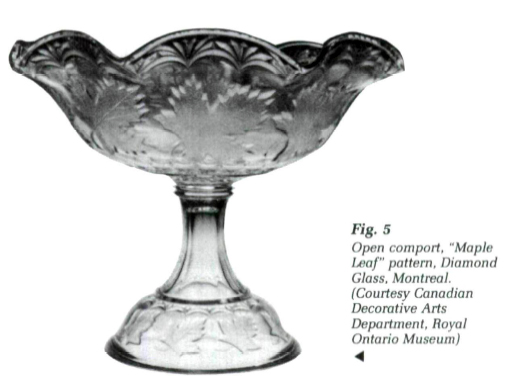 Display large image of Figure 5
Display large image of Figure 538 By way of example to show the possibilities of examining the various museum processes of transformation, this article will concentrate on only one of the museum processes, that of collections management and research, since it has direct applicability to the research model presented above.
Collecting Assessment and Policies
39 Directions in collecting can be changed by the curators, donors, directors or even board members active in the institutions. By the 1960s, following Sigmund Samuel's death, the Canadiana collection of the Royal Ontario Museum expanded beyond Samuel's taste for two-dimensional works to the decorative arts of furniture, silver, ceramics, woodcarving and glass as directed by the interests of curatorial staff.37
40 At some point, analysis must evaluate the collection in terms of the representative coverage in a collection given the patterns of diffusion of material evidence both in society and in museums themselves. This analysis should be complemented by a comparative study of the other collections in public or private hands in order to build up a sense of the patterns of evidence. This task may not be so difficult for the art gallery in which collections typically range from hundreds to the low thousands while curators can know from experience which institutions hold particular art works. For material historians, however, the problems of the numbers of artifacts which typically number 5000 and upwards can be overwhelming. These are the complex problems in the assessment criteria for representativeness within collections that shadow the intellectual streams identified in Tom Schlereth's work.38 More research is required to itemize the typical biases within museum collections along the lines of Turner, based on comparative studies of museums and their collecting histories.
41 There are fortunately many significant examples of collections analysis to redress bias in Canadian collections. The Canadian Museum of Civilization History Division, in its collecting and exhibition work of the 1970s and 1980s, has struggled to redress some of the imbalances of history.39 The Royal British Columbia Museum, the Provincial Museum of Alberta and the Western Development Museum are three examples where collections assessment have informed research and museum policies.40 There have also been significant attempts to redress problems in collections representation through more active collecting programs, particularly in the contemporary collecting arena.41 Unfortunately, such collections analysis in the field of nineteenth and twentieth century material culture has not yet occurred in the selected Toronto institutions. One exception is the assessment of Canadian furniture provided by Janet Holmes of the Canadiana Gallery.42 As part of the reassessment of the collection's significance, the Canadiana Gallery was renamed the Canadian Decorative Arts Department in 1986. Plans for a museum for the City of Toronto also holds out hope for more comprehensive material culture collections. Future steps will force an evaluation of the collections of the Toronto Historical Board and surrounding museums.
Documentation/Information Systems
42 Beyond the collecting policies, the documentation of collections can limit or assist collections utilization. Tom McFeat has identified an object-data continuum. At one end, the object is the dominant item. This is usually due to the fact that there is no surviving data to accompany an artifact or the dominance of an intrinsic property—such as aesthetic— or other features for which it was collected (structure, colour, form, curiosity, magic, ritual, value).43 At the other end is the data or research support material: notes, measurements, drawings, charts, graphs, photographs, models, letters, field notes. This could also include a record of its organizational usage, the museological record.
43 The act of recording the full range of material evidence is, however, very difficult, labour intensive, time consuming and very costly and has until recent decades been limited by our lack of understanding of documentation as an information system. The history and orientation of the museum is usually revealed in the documentation system. If the collection was formed with connoisseurial purpose, records focus on questions of style and identification as at the Canadiana Gallery of the Royal Ontario Museum. Subsequent usage of recorded evidence for alternative research purposes is hence limited.
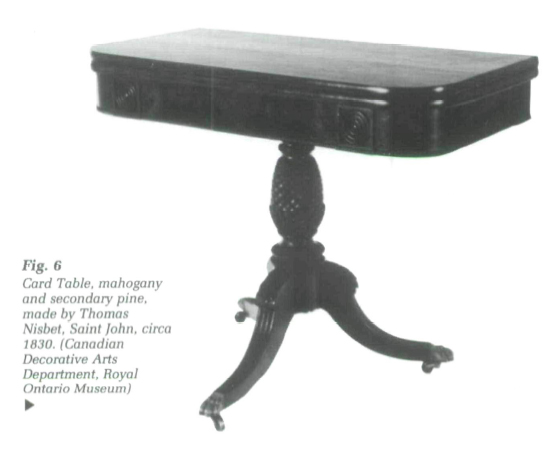 Display large image of Figure 6
Display large image of Figure 644 If the collection was formed to convey a historical story, the record of the context was frequently not available from the donor or vendor nor solicited by the museum staff. Record keeping for Canadian museums has developed primarily during the 1960s and 1970s, the result of intensive efforts in the training for records and registration management. Collections are often only partially registered or catalogued, frequently in several different record systems, while the enormous labour involved in updating has maintained backlogs of work even in the age of the microcomputer. In the case of larger museums as well, record keeping has been faulty, thereby limiting research utility. A percentage of identifying numbers and support evidence have been lost, or staff cannot keep up with the quantities of registration and cataloguing required.
45 For example, it is estimated that about one-third of the collections of the Toronto Historical Board (which runs five site museums in Toronto) were not registered as of May 1985. In the Royal Ontario Museum Ethnology Department's collections, a large number of the objects have had their original identification numbers lost as a matter of course over the years, a common state for museums.
46 But even given a workable record system, does the subject heading organization or classification index represent an accurate, usable finding aid for minds other than that of its creator? Frequently, the organization of the records obfuscates historical meaning by separating items from original connections or alternate associations, thus creating new meanings and removing original ones. Here, I would suggest that museum documentation could learn something from the archival attention to provenance, and must be informed by its history in the museum house including judgements of curators and cataloguers. Clearly, research on the documentation procedure of particular museums becomes part of the act of research about the objects, necessary to decoding the research message.
47 In 1969, the then Director of the Museum Studies Department at Leicester University, Raymond Singleton, wrote that "It is a poor sort of museum which has unique information locked up in its collections and records, unobtainable because it has no organized method of retrieving it."44 Fortunately for this generation of museum workers and researchers, the forces of computerization may hold out real benefits for the assessment of our collections, painful as many of the transitions are. Works such as Andrew Roberts' Planning the Documentation of Museum Collections and Elizabeth Orna's and Charles Pettitt's Information Handling in Museums hold out conceptual schemes for improve information-handling abilities in museums.45
Research
48 Notwithstanding this litany of problems of the museum artifactual record, there is also great potential to add to the research record. There are a variety of methods for examining material evidence for research purposes. The most accessible is the use of visual examination of surface, materials, methods of construction as well as style, design and iconography. But there are also scientific methods for examination available to the researcher, at least in consort with experts.
49 Visual examination most often follows comparative stylistic methods, or the formalist method, wherein stylistic characteristics of objects are evaluated against known objects. An example is a case of several historical Canadian prints in the Canadiana collection that had been attributed to William Henry Bartlett; the signature in the lower right-hand corner read Bartlett but the pieces raised questions as they did not resemble his known work. The curator at the Canadiana Gallery, Mary Allodi, has recently unravelled this mystery using the techniques of stylistic comparison; she noted the similarity with works by Coke Smyth and has discovered the Bartlett signature is most likely a later addition put there by an enthusiastic dealer or collector.46
50 But there is material evidence beyond the indicators of style and execution. Examination can begin to distinguish visual evidence such as surface hardness, distinguishing marks using the eye, magnifying glass, stereo microscopes, etc. Next, variable light sources and photographic techniques can be used to examine the work in more detail, for example, visible light photography, raking light photography, ultra-violet light examination, infrared examination, X-ray radiography, strata-radiography, colour radiography, stereo X-radiography and electron-radiography.
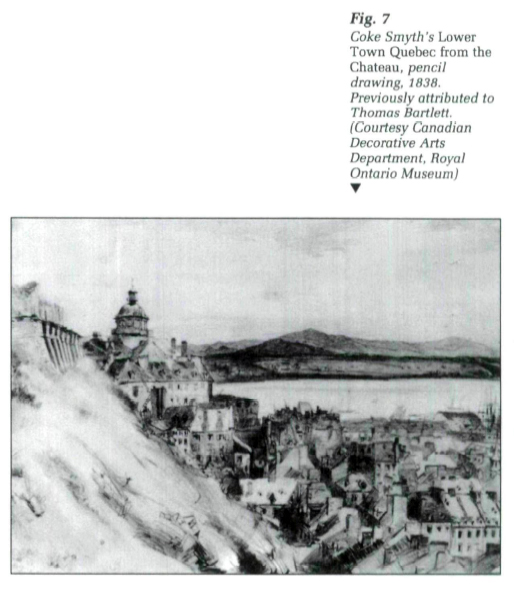 Display large image of Figure 7
Display large image of Figure 751 Beyond surface study, examinations of a single point or piece of a work can be done, for example, identification of a layer such as a pigment, microscopic examination, and microchemical analysis. Instrumental methods such as radio-carbon dating, and neutron activation study for trace elements, are also possible tools for the researcher.
52 With this discussion, we have entered the field of material science, a field yet to be exploited by material historians. Material science presents a rich variety of methods for materials investigation. An extension of engineering and physical sciences, material science has been used by scientific archaeologists, geologists, palaeontologists and art historians, for the most part to address questions of authenticity and identification as well as conservation.47 The numerous scientific procedures which can be used to unlock the intrinsic data of the artifact raise the ultimate spectre of rebuttal to Hesseltine's challenge. So far, these methods of analysis have been used to answer questions of what, how and when objects have been made; questions of the manner in which these items were used or their significance in society are more difficult to discuss with material science skills, but the evidence does provoke speculation and hypothesis creation.
53 Material science does indicate one of the most fruitful directions for material culture research will be that of interdisciplinary team work, joining expertise in a variety of fields to address general research questions or to assess specific collections. Unfortunately, all too few museums have scientific laboratories available for some of the more complicated scientific analyses. More and more frequently, however, museums do have some conservation expertise which can be utilized for examination of artifacts. Arrangements can also be made with nearby universities or medical laboratories to use their expertise for artifact study, such as the X-ray facilities of local veterinarians or doctors. Much of the work of material evidence analysis requires the networking of several museums or museum workers in teamwork research.
54 Sometimes curatorial staff fruitfully conduct research on the history and registration of their collection's documentation to re-create the information context of these items. In the ethnology department of the Royal Ontario Museum, in-house field work is conducted on the collections to determine their identification, original source and so on, using the evidence of the complex history of the collections with noteworthy success not only for re-identifying pieces, but also for establishing new perspectives on the collections.48
55 There are already many examples of material science successes particularly in the fields of archaeometry and the study of ancient materials. There have also been some successes in the study of more modern materials, from the study of the trace elements of native trade beads in New World archaeology collections in the Royal Ontario Museum to the study of nails to date post-eighteenth century houses.49
Use
56 Objects can also be altered by museum actions through storage, conservation, display and usage. Material is lost, destroyed and altered despite the intentions of their keepers. Frequently, objects are altered by vendors who doctor them or by curators who have removed or added physical characteristics based on their educated judgement as to what they really looked like. These actions, however, have frequently not been recorded although they too become part of the evidential base. Fortunately, modern ethics of conservation and restoration counter these tendencies along with the development of condition records which document physical alterations of an object.
57 Restorations of historic houses and sites are particularly problematic, especially when records of the restoration are not kept nor information about the selection of the objects recorded. At Fort York in the Toronto Historical Board, for example, the Officers' Sitting Room, restored in 1968, presents several problems to the present curator, Carl Benn, who must assess the accuracy of both the restorations and the collections. In addition, a collection's integrity is also affected by loss, destruction and alteration, sometimes by the normal day-to-day wear, and sometimes by incautious usage. Many objects at Fort York were lost or damaged when public social events were held in the buildings in earlier decades and artifacts were carted away or damaged. This is not an unfamiliar story within the history of museums but it creates a situation in which collections assessment for research purposes must include evaluation of museum usage and corresponding alteration of material evidence.
Other Museum Processes (M-M)
58 Additional museum transformation processes in the conduct of programs for research, education and exhibition can also be analyzed and are worthy of further study. A growing body of literature is being produced which examines the education and exhibition functions of museums both in terms of bias and ideology and in operational effect.50 Further, interpretation programming has enormous potential to correct the collections and research problems of museums; material evidence research can be a very big draw to the new audiences of museums, whose curiosity about museums behind-the-scenes seems to be limitless.
Stage Three De-Accessioning Museum Collections: M-S Processes
59 A historical study could be conducted on the de-accessioned collections material of museums as a record of changing individual and intellectual interests and is probably as necessary to understanding the predilections of specific museums and their collections as is a study of their existing collections.
Conclusions
60 In summary, the museum represents a continual transformation of cultural evidence while it also holds items which have passed through earlier survival steps. All of these factors present potential distortions to the researcher when assessing museum evidence in research design. At this point, it may be easier to give up on material evidence, as historians have done for so many decades; this is an unacceptable argument given the unique potential of collections to scholarship. To put these problems in perspective, it is important to remind ourselves of the bias of other forms of evidence. Documents, too, are changed, lost, destroyed, falsified, biased and subject to overrepresentation of a particular view. Oral evidence and pictorial evidence are also subject to a variety of problems.
61 The collections held in museums need not be shunned as unreliable sites for the evidence of academic study. Despite the idiosyncrasies of the formation of museum collections and the changes in the material evidence brought about through the housing and use of the materials, material evidence is probably no better or worse than other forms of evidence while it has the added value of concrete reality and affect. Clearly, the material evidence held in museums is a rich source for research but one which is unique and deserving of its own methods and models.
62 An exploration of a model for research in material culture using museums has been offered here which attempts to take into account the history, provenance and condition of the material evidence held in museums and related institutions as well as in the field. It assesses the material evidence, as well as any type of evidence (oral, pictorial, documentary), in terms of formation and institutional treatment; it approaches the research question, allowing for its testing or reformulation according to the complete evidential record. Using the example of four collections held in Toronto museums, it is clear that individual collections assessment as well as cross-institutional collections evaluation is yet to be accomplished in such as way as to allow for substantial evaluation of strengths and weaknesses for historical investigation. There is much work in collections analysis and evaluation to be achieved before the full exploitation of the material evidence record will be possible; an obvious solution is the development of interdisciplinary and cross-institutional collaborative solutions for material culture investigation.
63 Like the transformation of silk purses from sows' ears, the physical and cultural object world re-created in museums is a rich and relatively untapped resource available to the researcher; all that is required is that he or she approach the material as critically as any other source material.
* This article is a revision of a paper presented to a conference on material culture sponsored by Memorial University and the Winterthur Museum, held in St. John's, Nfld., in June, 1986. The author wishes to acknowledge the assistance of Dr. Gerald Pocius of Memorial University.
